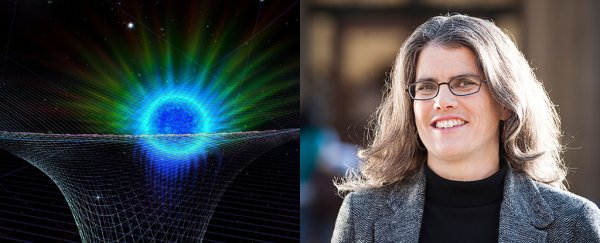For US astronomer Andrea Ghez, who won this year's Nobel Physics Prize, what makes black holes so fascinating is how tricky they are to conceptualize.
If she's asked to explain them to an average person, her standard answer is: "A black hole is an object whose pull of gravity is so intense that nothing can escape it - not even light."
That doesn't always satisfy people's curiosity.
"Very few people understand what a black hole is - but I think so many people are fascinated by them," the professor at the University of California, Los Angeles told AFP by phone after she was co-awarded this year's prize, along with Roger Penrose of Great Britain and Reinhard Genzel of Germany.
This summer, Ghez's team celebrated the 25th anniversary of the start of their project, using a massive telescope in Hawaii, new optical technologies and innumerable calculations to measure the supermassive black hole at the center of the Milky Way called Sagittarius A* - pronounced 'Sagittarius A-star'.
"It's very hard to conceptualize a black hole," she said. "The laws of physics are so different near a black hole than here on Earth, that the things that we're looking for, we don't have an intuition for."
"So I can think of it mathematically, I can think of it abstractly, but it's very hard to form a picture because you get this mixing of space and time," she added.
The way to 'see' a black hole, which is by definition invisible, is to observe the orbits of the stars around it.
Ghez says that after 25 years, she has a detailed map in her mind of some of the brightest in a jumble of stars locked in tight orbits around Sagittarius A*.
"I feel like all the stars are like children whose names you know and recognize, but every year they're a little different," said the astronomer.
One star, called S2, completes its orbit in less than 16 years, speeding up on its approach to the black hole and slowing down as it moves away.
Our Sun takes 200 million years to complete its orbit - dinosaurs were roaming the Earth when we started our current lap.
'Torn apart'
What does the professor think it would be like to fall through a black hole?
"We won't survive," she said.
"So if you were to think about falling into a black hole feet first, the first thing that would happen is that the pull of gravity is so much stronger in your feet than your head that you would actually be torn apart.
"We wouldn't feel anything because we wouldn't exist, we wouldn't survive it, we would be broken down into our fundamental pieces. I would not want to do this."
Ghez earned her PhD at Caltech in 1992 and has been at UCLA since 1994, where she co-directs the Galactic Center Group.
She's convinced that more of the mysteries surrounding black holes will be unraveled in her lifetime.
"I think this is an area of physics where the rate of discovery is getting faster and faster because technology is evolving so quickly," she said.
The last woman to win a Nobel Physics Prize was Canadian Donna Strickland, two years ago. Before her, there were two other women - Maria Goeppert Mayer in 1962 and Marie Curie in 1903.
A total of four women, against more than 200 men.
"The field has been dominated by men for a long time," said Ghez.
"But today, there are a lot of women going into the field. And so I'm delighted to be able to serve as a role model for young women."
